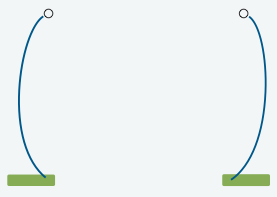Off the Tee
 Golfers today are enamored with distance. Many of them think nothing of plunking down several hundred dollars every time the latest and greatest driver comes along. Promising junior golfers are led to believe that they cannot compete at a high level unless they hit the ball over 300 yards on average. Television coverage is replete with announcers telling us that the bunkers 280 yards away are not in play for the majority of the field, as they will simply fly their drives over them.
Golfers today are enamored with distance. Many of them think nothing of plunking down several hundred dollars every time the latest and greatest driver comes along. Promising junior golfers are led to believe that they cannot compete at a high level unless they hit the ball over 300 yards on average. Television coverage is replete with announcers telling us that the bunkers 280 yards away are not in play for the majority of the field, as they will simply fly their drives over them.
How important is distance in today’s game? If you look on the surface, you would have to say it’s critical to hit a long ball if someone wants to compete at a high level. But, distance is relative, and it always has been. Let’s look at some numbers. Back in 1980, firmly in the persimmon driver/balata ball era, the median drive on the PGA Tour averaged 256.7 yards. Today, that number is more than 10 yards behind the shortest driver. Yet, those players who barely cracked the 250-yard barrier didn’t have any problem shooting great scores on 7,000- yard courses back then, which leads to the question: Why can’t someone who averages 256 yards make it on today’s Tour? The answer is more involved than just saying today’s Tour courses are longer than they were in 1980. Skill and distance go together. Golfers who are skilled enough to play at the Tour level simply have mechanics that allow them to hit a ball a certain distance.
A study was published in Golf Teaching Pro back in the Spring 1999 issue which analyzed six statistics: Driving distance, driving accuracy, greens in regulation, putts per round, putts per GIR, and scrambling. The statistics were gleaned from an amateur tour in Florida that kept these numbers.
Which stat was the most important in relation to scoring average? Greens in regulation percentage. Which stat was the least important? Driving distance.
We should stress to our student that it’s more important to hit the ball solid and accurate than hitting it far. The good news, of course, is that if they improve their mechanics, increased distance will follow, too.
The first step is for our students to know what their ball flight tendencies are, whether left-to-right, right-to-left, or straight. They should know which direction they tend to miss their drives. Left-to-right players, and players who tend to miss their drives to the right, should play from the right side of the teeing ground, aiming down the left side of the fairway. The opposite is true for right-to-left players and players who tend to miss to the left.
If the trouble on one side of the hole is so severe that it must be avoided at all costs (e.g., out of bounds), and the player’s normal ball flight will take them towards that trouble, then it may be necessary to aim outside the fairway.
The important thing to note with the tee shot is that its main role is to avoid trouble. Hitting the ball 300 yards does us no good if we’re right behind a tree, for example. It may be necessary to hit a fairway wood, hybrid, or even an iron off the tee if that’s what it takes to get a second shot that’s playable.




